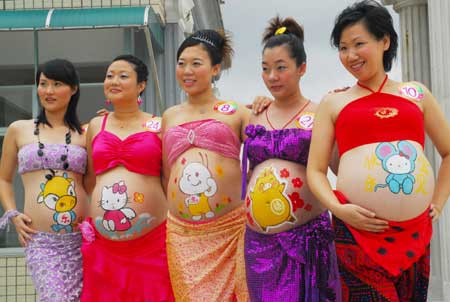| Home > Living in China > Art |
Classic Chinese Handicraft: Porcelain Pillows
Porcelain pillows, as classic Chinese handicraft, reflects unparalleled value of Chinese ancient art. Of the many necessities in people's daily life, the simple pillow is close to the heart and head of us all.
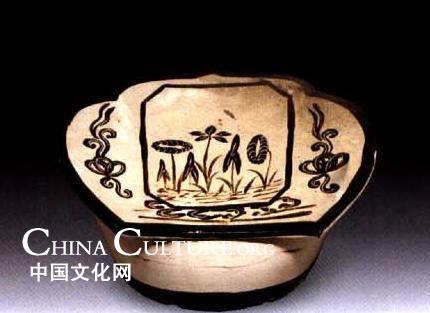 |
|
White glaze black lotus porcelain pillow, Cizhou Kiln of Song Dynasty, preserved at Shaanxi History Museum. |
Chinese ancient pillows were first made of natural stones and later the materials used extended to wood, jade, bronze, bamboo and porcelain. Surprisingly, among all these pillows, porcelain pillows were most widely used.
Porcelain pillows came into being with the development of porcelain-making crafts first appearing in the Sui Dynasty (581-618) and their mass production began in the Tang Dynasty (618-907). Porcelain pillows reached the climax in terms of production and use in the Song, Jin and Yuan dynasties (10th-14th century) .
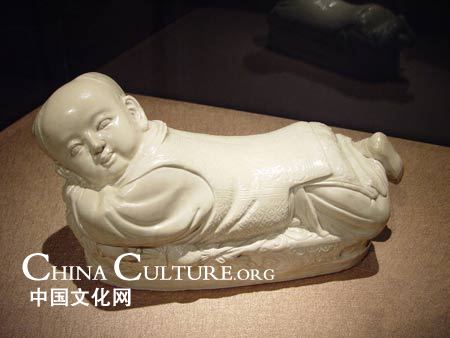 |
|
Child Pillow, preserved at the Palace Museum, Beijing. |
In the development of porcelain pillows, the ones made in Cizhou Kiln in the north during the Song Dynasty (960-1279) were the most representative.
Porcelain pillows produced in this period feature a great variety and elegant modeling, including the geometrical shape, animals, architectures, human figures and other shapes. They also have colorful decorative patterns, and usually included the patterns of animals, plants, human figures, mountains and waters, and characters, etc. The modeling and decorative patterns on the pillows directly or indirectly reflect the culture, customs, fashions, and pursuits of the social life at that time.
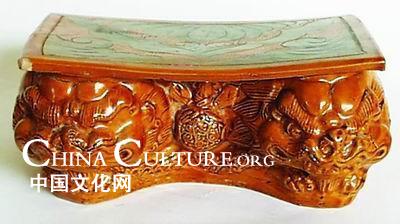 |
|
Three colors double lions flower porcelain pillow, Song Dynasty, preserved at Yunnan Province Museums |
Decoration techniques of porcelain pillows were different from each other in accordance with different dynasties and producing areas. Before the Tang and Five Dynasties period (7th -10th century), porcelain pillows were mainly of module imprint and carefully carved; in the Song and Jin period (10th-13th century), porcelain pillows featured paintings and more complicated decoration techniques. With further improvement of porcelain-making skills and decoration techniques, porcelain pillows demonstrated more and more beautiful arts and crafts.
Besides Cizhou porcelain pillows, many well-known kilns in different places of China all produced fine porcelain pillows, which featured different designs and decorations of glaze and lines and whose styles as a whole were consistent to their corresponding dynasties and characteristics of kilns.
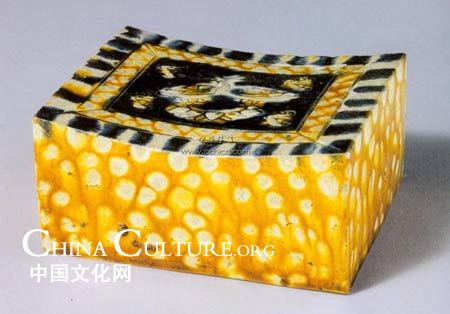 |
|
Three colors mandarin ducks pillow, Tang Dynasty |
In the Ming and Qing dynasties (1368-1911) with the emergence of better pillow-making materials,porcelain gradually phased out.
Art
 more
moreClassic Chinese Handicraft:
Porcelain pillows, as classic Chinese handicraft,

Chinese Treasures Returned from
As witness of Chinese culture and custom, countless treasures
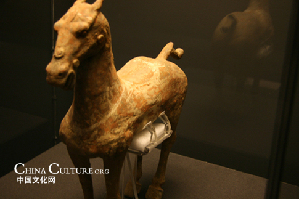
The lost legacy: classical music
Accompany by the long history of China, Chinese classical music
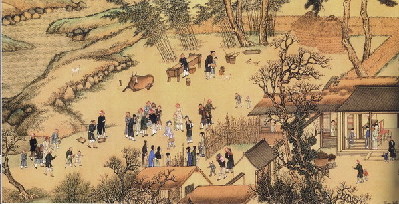
Customs
 more
moreChinese Kungfu
Kungfu Taste: Learn Martial Art in Shaolin Temple
The mention of Shaolin Temple conjures up images of a quiet and
Keet Kune Do will reappears on screen: BRUCE Lee and
The Legend of Bruce Lee is shot by China Central Television
The Road to the Olympic Games for Wushu
Wushu, also called kungfu, martial arts, is attracting more and more




 print
print  email
email  Favorite
Favorite  Transtlate
Transtlate 